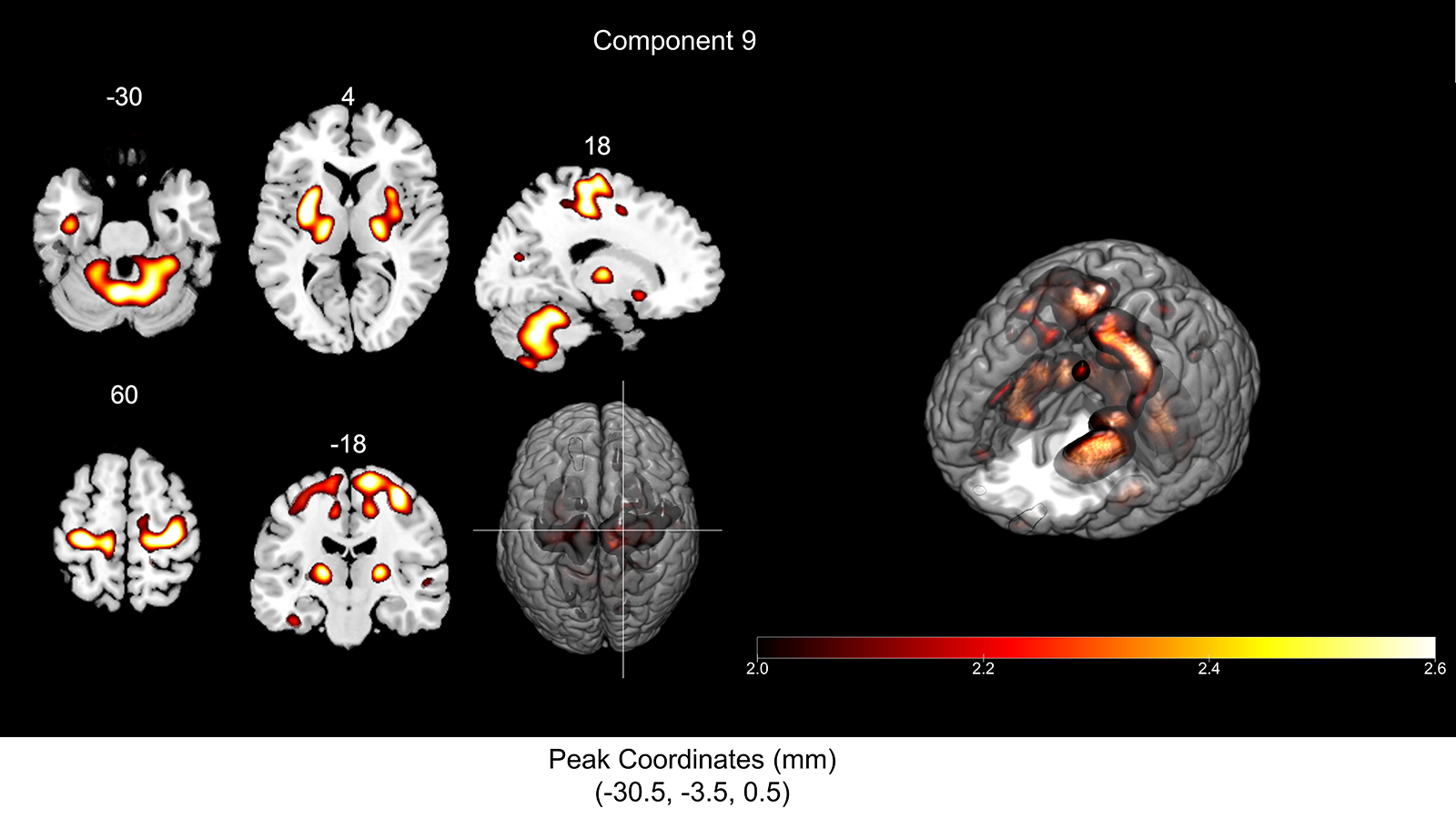Category: Parkinson's Disease: Neuroimaging
Objective: To examine the spatial convergence of hemodynamic and metabolic network characteristics based on dynamic [18F]FDG-fPET acquisition
Background: While fMRI reveals within-subject hemodynamics, [18F]FDG-PET traditionally provides an individual’s static scan, and thus a snapshot of glucose consumption (sPET) [1]. Metabolic equivalents of large-scale networks and changes in metabolic connectivity in PD have therefore only been available at the group level [1–3]. Pioneering studies have conducted time-resolved [18F]FDG-PET (fPET) acquisitions, allowing connectivity analyses at the subject level [4,5]. Here, we applied the fPET protocol in a clinical context for the first time.
Method: PD patients and healthy controls with comparable cognition specified by inclusion criteria, underwent a multimodal imaging protocol with sequential resting-state dynamic FDG-fPET and MRI acquisition. In PD patients, both scans were performed in the OFF-state. FDG was infused continuously at 0.01 ml/s. After low-dose CT scans, data were acquired in list-mode for 90 min and reconstructed offline. Multimodal data sets were preprocessed using standard procedures. To obtain networks in the whole group, independent component analysis (ICA) was performed. For atlas-based analyses, metabolic and hemodynamic timeseries were extracted and connectivity measures derived by Pearson correlation. Our aim is to test whether PD-related changes in fPET metabolic connectivity are consistent with group-level sPET measures and hemodynamic connectivity when the study population is complete.
Results: In total, multimodal data sets from sixteen participants were available for preliminary analyses. ICA revealed six independent resting-state networks in dynamic [18F]FDG-fPET, including a sensorimotor network component with astonishing completeness in the total group (cf. Fig. 1). Atlas-based whole brain analyses revealed a high subject-level metabolic connectivity between frontal, temporal, parietal and occipital regions and along fronto-parietal connections with moderate correspondence to sPET group level measures.
Conclusion: Dynamic [18F]FDG-fPET acquisition with constant tracer infusion is a promising approach to identify metabolic brain networks with excellent identification of the sensorimotor network. Our preliminary results suggest a moderate relationship between fPET connectivity and sPET-based measures at the group-level.
References: [1] A. Savio, S. Fünger, M. Tahmasian, S. Rachakonda, A. Manoliu, C. Sorg, T. Grimmer, V. Calhoun, A. Drzezga, V. Riedl, I. Yakushev, Resting-State Networks as Simultaneously Measured with Functional MRI and PET, J. Nucl. Med. 58 (2017) 1314–1317. https://doi.org/10.2967/jnumed.116.185835.
[2] X. Di, B.B. Biswal, Metabolic brain covariant networks as revealed by FDG-PET with reference to resting-state fMRI networks, Brain Connect. 2 (2012) 275–283. https://doi.org/10.1089/brain.2012.0086.
[3] A. Sala, S.P. Caminiti, L. Presotto, E. Premi, A. Pilotto, R. Turrone, M. Cosseddu, A. Alberici, B. Paghera, B. Borroni, A. Padovani, D. Perani, Altered brain metabolic connectivity at multiscale level in early Parkinson’s disease, Sci. Rep. 7 (2017) 4256. https://doi.org/10.1038/s41598-017-04102-z.
[4] S.D. Jamadar, P.G.D. Ward, E.X. Liang, E.R. Orchard, Z. Chen, G.F. Egan, Metabolic and Hemodynamic Resting-State Connectivity of the Human Brain: A High-Temporal Resolution Simultaneous BOLD-fMRI and FDG-fPET Multimodality Study, Cereb. Cortex (2021). https://doi.org/10.1093/cercor/bhaa393.
[5] M. Villien, H.-Y. Wey, J.B. Mandeville, C. Catana, J.R. Polimeni, C.Y. Sander, N.R. Zürcher, D.B. Chonde, J.S. Fowler, B.R. Rosen, J.M. Hooker, Dynamic functional imaging of brain glucose utilization using fPET-FDG, Neuroimage 100 (2014) 192–199. https://doi.org/10.1016/j.neuroimage.2014.06.025.
To cite this abstract in AMA style:
M. Ruppert-Junck, V. Heinecke, K. Steidel, M. Beckersjürgen, D. Librizzi, M. Luster, H. Müller, F. Verburg, L. Timmermann, C. Eggers, D. Pedrosa. Metabolic connectivity assessed by dynamic FDG-fPET acquisition in Parkinson’s disease: a multimodal fPET and fMRI study [abstract]. Mov Disord. 2023; 38 (suppl 1). https://www.mdsabstracts.org/abstract/metabolic-connectivity-assessed-by-dynamic-fdg-fpet-acquisition-in-parkinsons-disease-a-multimodal-fpet-and-fmri-study/. Accessed September 16, 2025.« Back to 2023 International Congress
MDS Abstracts - https://www.mdsabstracts.org/abstract/metabolic-connectivity-assessed-by-dynamic-fdg-fpet-acquisition-in-parkinsons-disease-a-multimodal-fpet-and-fmri-study/

